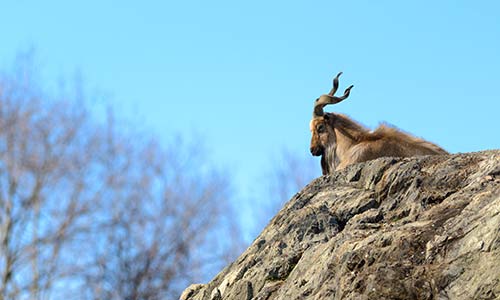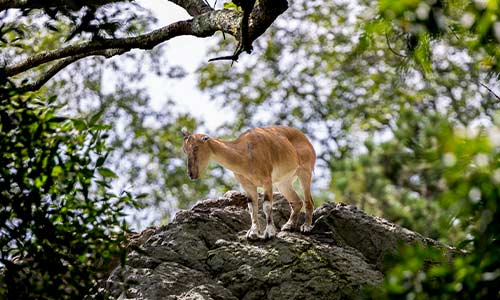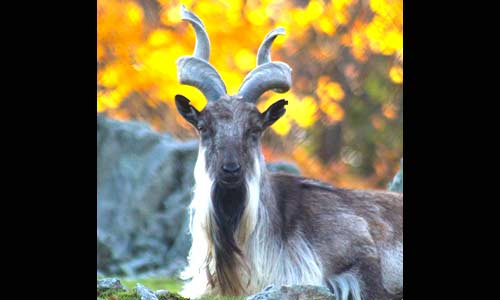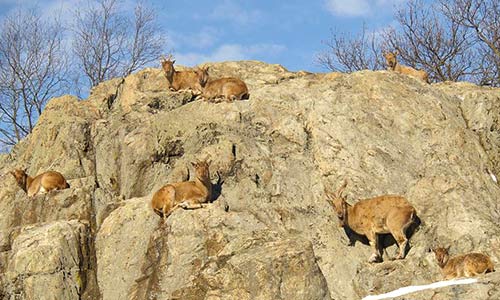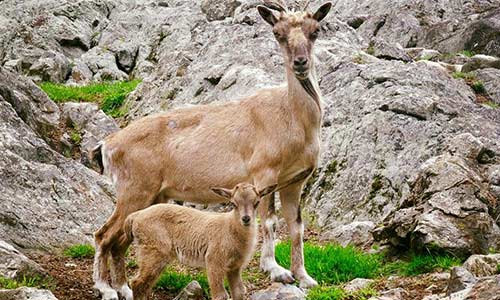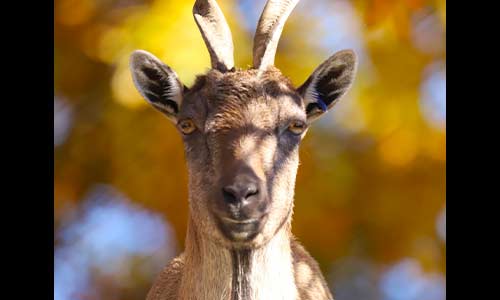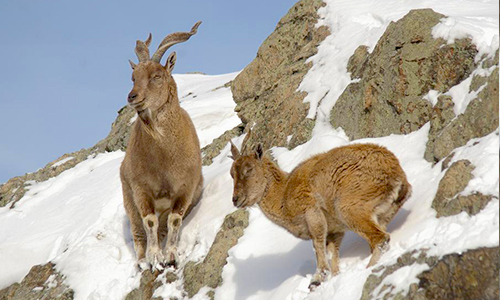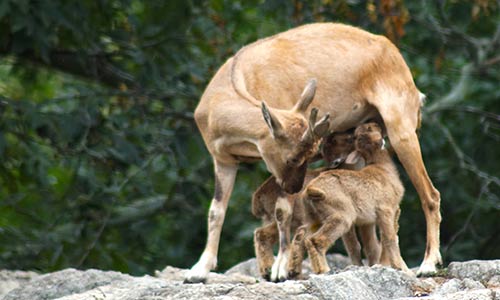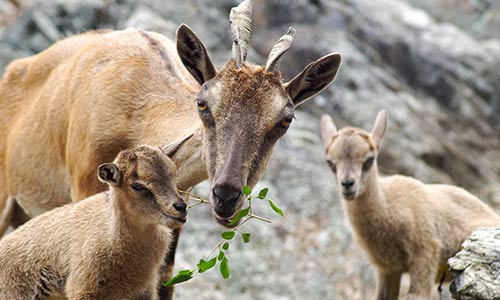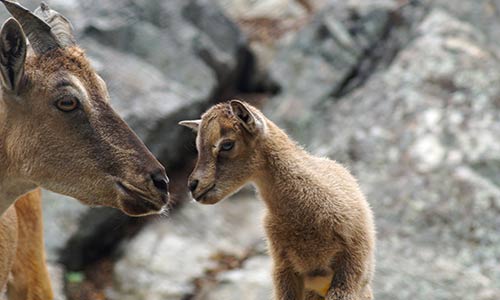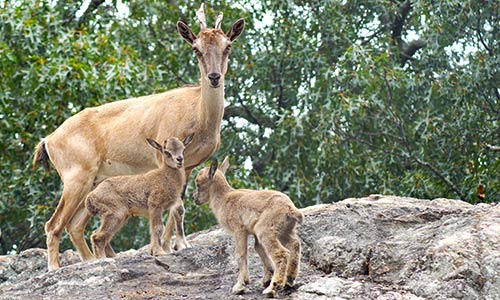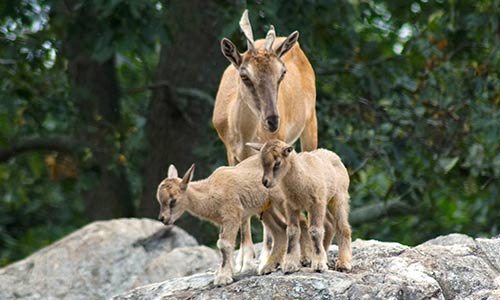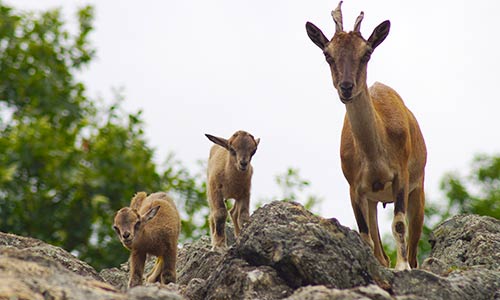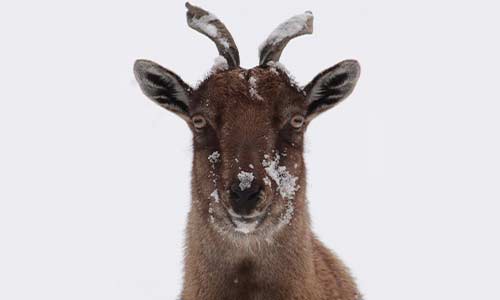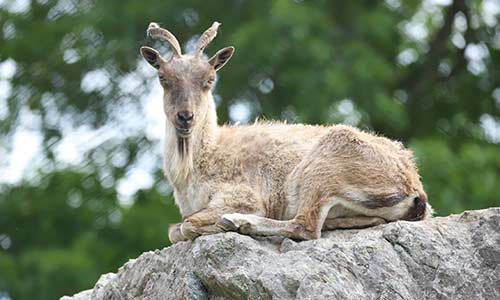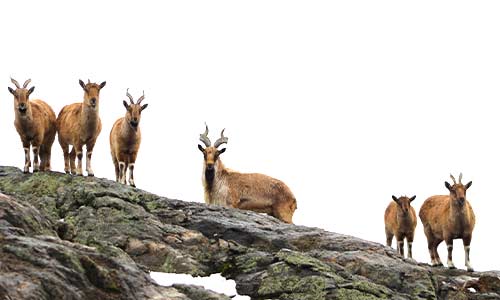Introducing two new faces at Stone Zoo
Wednesday June 17, 2015
Visitors to Stone Zoo will notice new furry and feathered faces with the recent birth of a markhor kid and the hatch of a Caribbean flamingo.
On May 23, a markhor was born, marking the first successful birth of this endangered mountain goat species at Stone Zoo since 2004. Stone Zoo is home to four markhor, including the new kid whose sex is not yet known.
“This is an incredibly exciting birth and we are thrilled to share this news with everyone. The mother is very attentive and is doing everything she should be doing. These animals are skilled climbers suited to rough, rocky terrain, and it’s amazing to observe the agility in the kid at such a young age,” said Pete Costello, Assistant Curator of Stone Zoo.
Zoo New England participates in the Markhor Species Survival Plan (SSP), which is a cooperative, inter-zoo program coordinated nationally through the Association of Zoos and Aquariums (AZA). SSPs are designed to maintain genetically diverse and demographically stable captive populations of species. This birth is the result of a recommended breeding.
Markhors are native to the Himalayan Mountains. Their range includes northern India, Pakistan, and Afghanistan, and they can typically be found living around or above the tree line. The largest of the wild goat species, markhor have broad hooves and striking spiral horns that can grow to five feet long in mature males. Learn more about markhors here.
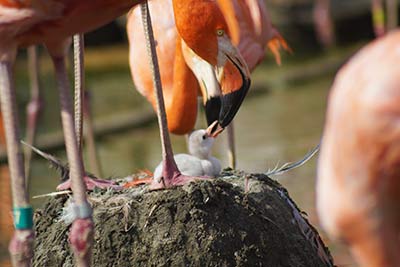 A few weeks after the markhor was born, on June 12 a Caribbean flamingo chick hatched. The Caribbean flamingos have laid 23 eggs this season and many more hatches are expected. Throughout the spring, guests have had the opportunity to observe flamingo courtship behavior and nest building, and will now have the opportunity to watch the parents care for the chick.
A few weeks after the markhor was born, on June 12 a Caribbean flamingo chick hatched. The Caribbean flamingos have laid 23 eggs this season and many more hatches are expected. Throughout the spring, guests have had the opportunity to observe flamingo courtship behavior and nest building, and will now have the opportunity to watch the parents care for the chick.
Stone Zoo has had a highly successful Caribbean flamingo breeding colony for many years. The first breeding occurred in 1994, and it has continued through the years with a total of 79 hatches. Flamingos breed most readily in high density breeding colonies. The ideal breeding conditions must include easy access to water as well as a shallow muddy area. Flamingos build their nests by mounding up piles of mud, which can measure up to two feet tall. Both in the wild and in captivity, the high density, muddy breeding colonies can become rather aromatic. A single egg is laid and is incubated by both parents. Both parents are active in rearing the chick.
Caribbean flamingo chicks are born white and develop their distinctive pink color at around two to three years of age. Caribbean flamingos have a richer scarlet/rosy plumage compared to that of the Chilean flamingo, a flock of which is exhibited at Franklin Park Zoo. The flock at Stone Zoo is now 48 birds, including the new chick, which range in age from one week to 46 years. Learn more about Caribbean flamingos here.
Photos courtesy of Zoo New England/Dayle Sullivan-Taylor

